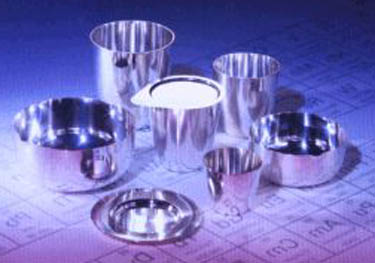An Introduction To Platinum Labware
The Many Uses Of Platinum Labware : Most people are aware that platinum is used in collectable coins, catalytic converters for both cars and industry, bars in bullion form and is also used to make some high end jewelry.
What many people don’t know is this precious metal is not only worth a lot of money, it is priceless in some of its more practical uses. Platinum has a high melting point and is resistant to corrosion and most acids.
These traits, along with many others, make it valuable in ways that money simply can not buy and ideal in the use of platinum labware.
Platinum is malleable and ductile, which makes it easy to work with in many cases, and also has a high fuse point. It does not expand as much as other metals when heated, and is resistant to the flow of electricity.
Types Of Platinum Labware
When it comes to labware, the uses are almost unlimited. Platinum does not react (or has a very low reaction) when it comes into contact with many other elements. This means that it can be used to handle almost anything without that tool altering the reaction or the outcome of the experiment.
The following is a list of some of the most common applications in labware:
- crucibles
- tongs
- combustion boats
- funnels and other like implements
- evaporation dishes
- electrodes
- inoculating loops
- wire and wire mesh
- anodes.
- non-wetting apparatus
- special analysis dishes
- micro chemical apparatus
- utensils
- special crucibles
- ICP-MS ion extraction cones
It does not end there however. Platinum is great because it is one of the best materials used in electrical contact points in many different things, and its resistance to high heat makes it useful when used in instruments that are made to measure high temperatures. Those applications may seem limited, but they are actually more widespread than one would think.
When experiments are conducted, the cleanest possible outcome is needed. When the materials used have an affect on an experiment, the outcome can not be trusted. When using platinum labware, the results are more readily accepted, and can be trusted much more so than when something else is used. More and more things are being made with this metal beyond the current inventories to ensure accurate and unaltered results in the laboratory.
The Cost Of PGM Labware
Because platinum is so expensive, not all tools are made exclusively of this material. Some have to be, and those are the things that will cost the most. However, when it comes to things like tongs, the tips used to handle the material are the only parts that are needed to be made of pure platinum.
With tongs The handles and part of the length can be made with a less expensive material. The same can be said for tweezers, and in some cases, stirring rods and other implements as well.
The draw back of platinum labware is the price. It’s expensive, but worth the cost. However, the high value of such things also makes these lab tools a target for those wants to take the metal and resell it on the market. Though most labs have high security, having platinum materials in the lab makes security an even bigger issue.
Platinum Labware tends to have a minimum platinum content of 80 to 90% and can be up to 99.9%. On the other end of the spectrum I have purchased platinum clad wire and mesh with platinum content in the region of 7 to 9%
We Buy Gold, Platinum And Silver In Any Condition Canada Wide.
Thinking of selling your unwanted platinum labware ? Remember we buy platinum, gold and silver Canada wide including:
Ontario On, British Columbia BC, Alberta AB, Saskatchewan SK, Manitoba MB, Quebec QC, Nova Scotia NS, New Brunswick NB, Newfoundland and Labrador NL, Prince Edward Island PEI, Yukon YT, Nunavut and the North West Territories NT










